Shapoor Statue Cave | Iran’s Ancient Treasure
Kazeroon, situated in Fars province, is one of Iran's key historical regions, rich with ancient landmarks and tourist attractions.
Bishapur, located in the northern part of Kazeroon, was constructed by Shapur I during the Sassanid period. This city, known for its natural beauty, served as the winter capital of Shapur I and is regarded as one of the most notable cities of the Sasanian era. Kazeroon, with its rich history and ancient landmarks, is home to significant sites, including the ancient city of Bishapur and the statue of Shapur I within the Shapoor Statue Cave.
The History of Shapoor Statue Cave
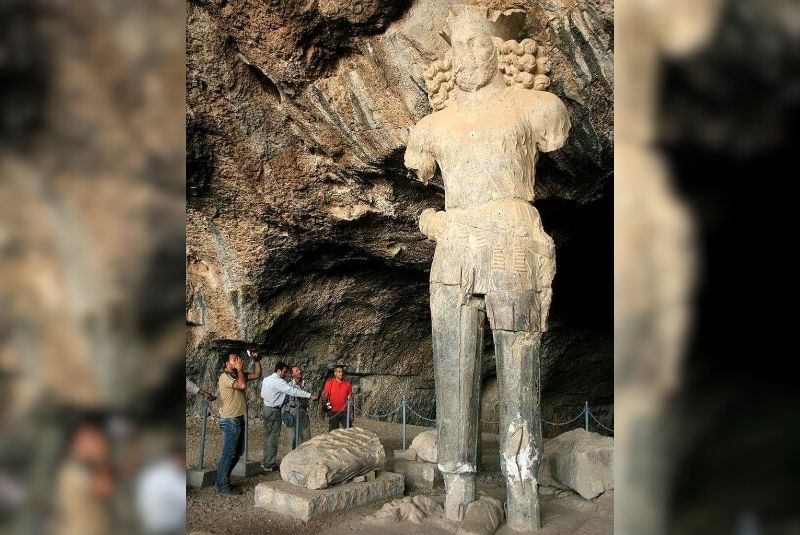
According to historical sources, the Shapur statue in the Shapur Statue Cave is approximately 1,700 years old, dating back to the Sassanian era. However, the exact age of the cave itself remains uncertain, though its existence predates the Sassanid period.
A French archaeologist once theorized that the cave might have been the burial place of Shapur I, given the statue's presence within it, but this remains speculative and lacks definitive evidence. The cave is situated at the base of a gorge known as Tange Chogan, which holds its own historical significance. Tange Chogan served as a playground for Sassanid kings, who played the traditional Iranian game of Chogan there, giving the gorge its name.
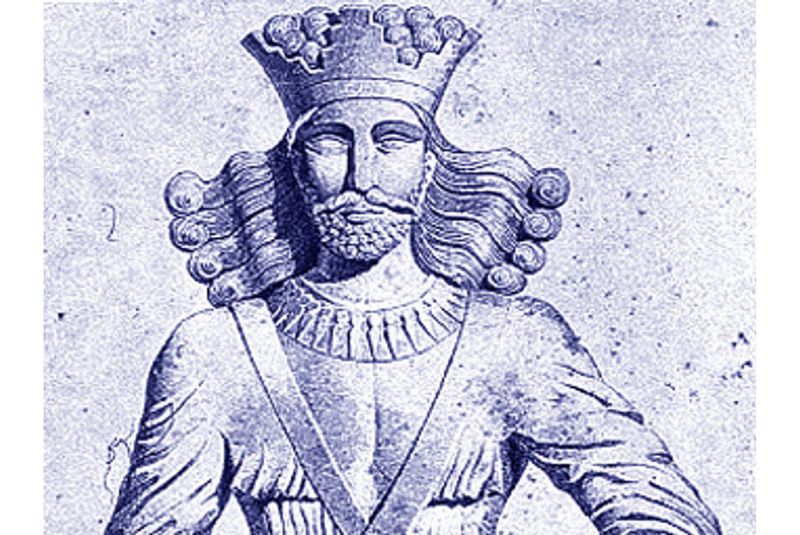
The historical value of Tange Chogan is evident as you traverse from its western to eastern ends, where you can observe about 12 rock reliefs carved into the gorge, three of which depict Shapur I's victories over the ancient empire. The proximity of Tange Chogan to the ancient Sassanian city of Bishapur adds to its significance, as Bishapur was an important city founded by Shapur I.
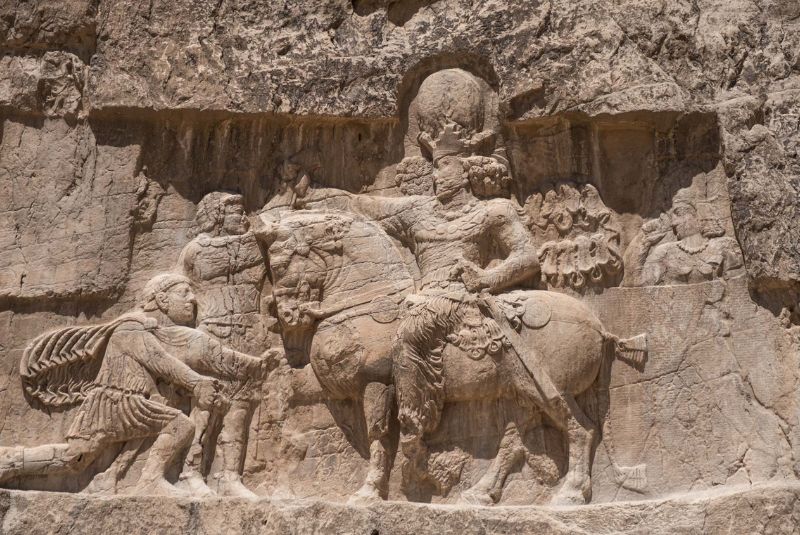
It is believed that the Shapur Statue Cave, similar to other ancient sites like the Babajabar and Niasar caves, was a place of religious and ritual significance before the Sassanid era. Following the Sassanid consolidation of religious unity under Ardeshir and Shapur I, efforts were made to supplant earlier beliefs. For instance, a large fire temple was constructed next to the Niasar cave. In line with this, Shapur I commissioned his statue to be carved inside the Shapoor Statue Cave, transforming the cave into a prominent cultural and religious center of the ancient world.
The Magnificent Shapoor Statue Cave
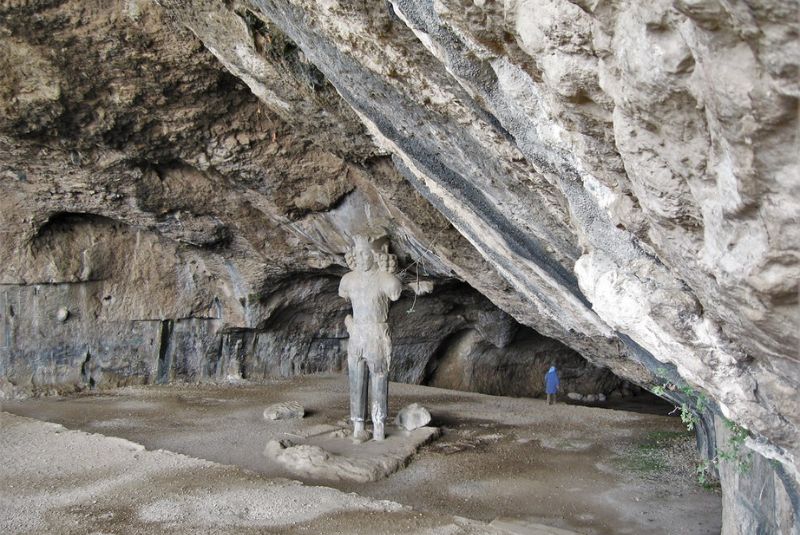
Shapoor Statue Cave is carved into the mountain wall that surrounds the Tange Chogan plain, forming a semicircular structure. The entrance to the gorge is adorned with stone reliefs that depict various aspects of Sassanian history. To the right of the gorge’s entrance, the remnants of an old castle can be seen, which likely served as a guard post for the ancient city of Bishapur. Below, the Shapur River flows, once channeling water into the city through a network of canals. Inside the cave, several sections are present, with three halls being the most significant.
Cave Mouth
Shapoor Cave is embedded within a mountain composed of minerals, with an entrance measuring 30 meters wide and 15 meters high. Upon entering the cave, to the left, a partially constructed crypt can be observed. About ten meters into the cave stands the statue of Shapur I, towering over six meters high. This statue is a powerful symbol of Shapur I's reign during the Sassanian era. Near the cave’s entrance, two stone inscriptions are present. One is a translation of Shapur’s inscription from Naqsh-e Rajab, while the other details the statue’s re-erection in 1336, after it had toppled for over 1,000 years. Both inscriptions were created by military personnel.
Passages and Halls
The cave consists of four large passages, five smaller ones, four side passages, and three main halls. Due to the cave's deep, dark interior, slippery surfaces, and numerous side caves, a full exploration has yet to be accomplished. One of the corridors opens up at the end of the cave, revealing another cave above. However, this area is inaccessible to most tourists due to the lack of proper facilities. To reach the end of the cave, one must cross a chasm and climb a steep incline, eventually entering a wider corridor. At the far left of this corridor is a flat area, partially man-made, that likely served as a site for ritual sacrifices. The ceiling in this section reaches a height of 40 meters, making it the tallest space within the cave. The entire length of the cave, from the entrance to the back, is estimated at 450 meters.
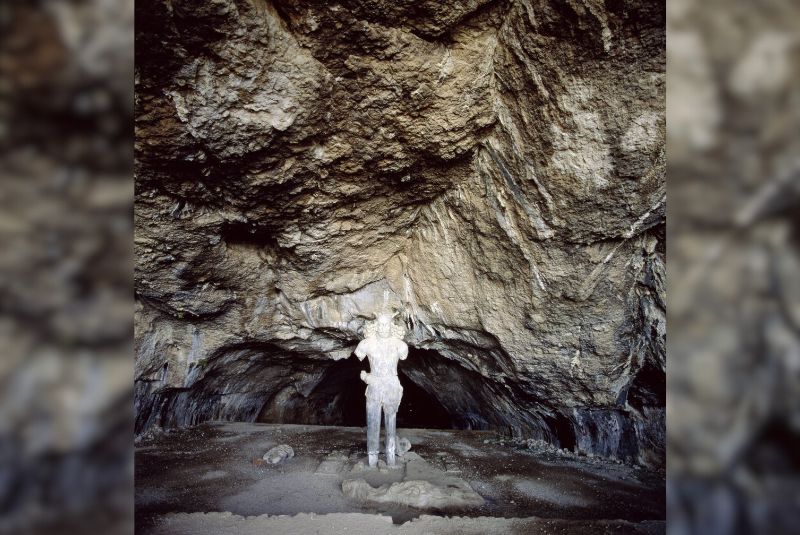
Sacrificial Site
At the end of the cave, beyond a chasm and pit, lies a smooth, hand-crafted area. This section is believed to have been used for ritual sacrifices and religious ceremonies. The ceiling here is the highest in the cave, reaching 40 meters.
Porches
Within Shapoor Cave, four terraces lead from the entrance deeper into the cave. The height differences between these terraces vary, with 10 steps between the first and second, eight steps between the second and third, and seven steps between the third and fourth. The statue is situated on the fourth terrace, which is the widest and leads further into the cave via 12 steps. These terraces were created in 1336 to provide better access to the statue. The first two terraces were polished, and Pahlavi inscriptions and Naqsh-e Rajab motifs were carved onto the walls. Around the statue, four platforms were constructed to place its separated parts, though these have since been destroyed, leaving only their foundations visible.
Ponds and Reservoirs
In the first hall of the cave, two water reservoirs, carved into the rock, are located about five meters apart. Each reservoir is about one-meter-deep, with dimensions of three by four meters and two by five meters, respectively. The water collected from the ceiling was stored in these reservoirs, serving the needs of the cave's inhabitants. Nearby, a stone waterfall and several drip formations add to the cave’s natural beauty. A large pit, approximately 100 meters in diameter and 30 meters deep, lies beyond the reservoirs, suggesting that the cave may have been used as a temporary settlement.

Shapur's Treasure
Shapoor Cave is regarded as a significant cultural and historical site in Iran. This has led some to speculate that a hidden treasure might be buried within the cave. Although caves have historically been used to store valuable items, extensive research has revealed no such treasure within Shapur Statue Cave. The cave's most valuable asset remains the magnificent statue of Shapur I, visible to all who visit.
The Shapur I Statue
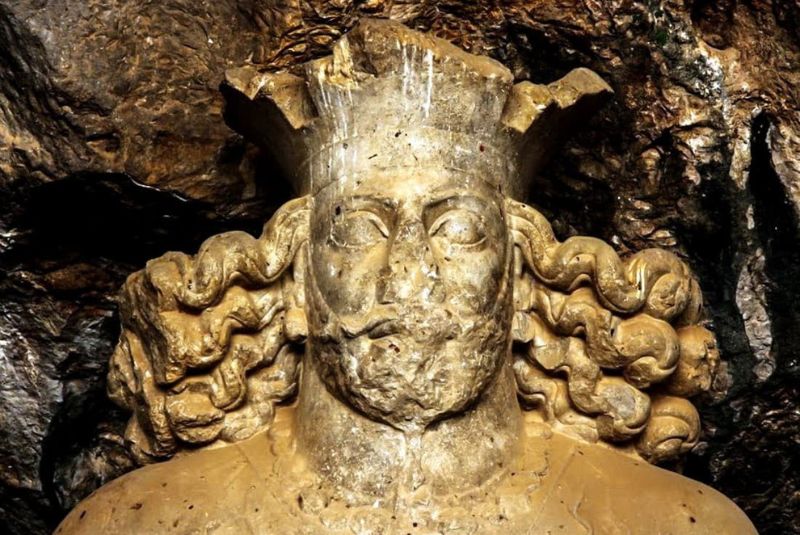
As you enter Shapur Cave, the statue of Shapur I stands as one of the most impressive artifacts of the Sassanian period. This 1,700-year-old statue, carved directly from the cave’s stalagmites by a skilled artist using iron and steel tools, is a remarkable representation of Shapur I. The statue, standing seven meters tall with a shoulder width of over two meters, depicts a strong, imposing figure with light red hues. Although the statue’s head, crown, and other details remain intact, its hands, mouth, and feet have suffered significant damage, leading to various theories about its destruction. Some believe an earthquake caused the damage, while others attribute it to Arab invaders during their conquest of Iran. Despite its current condition, the statue continues to evoke the power and grandeur of Shapur I's reign.
Location and Access to Shapoor Statue Cave
Location: Shapoor Statue Cave is situated in Fars Province, approximately 30 kilometers north of Kazeroon and about 4 kilometers from Tange Chogan.
Accessing Shapoor Statue Cave
For those traveling by air, the nearest airport is Shiraz Airport, located around 90 kilometers from Kazeroon.
To visit Shapur Statue Cave, fly to Shiraz and drive to Dasht Arjan. From there, take the newer road to Bishapur. The cave is located near the village of Kashkoli, about 5 kilometers away. Be prepared for a challenging hike of approximately 230 steps, which typically takes 3-4 hours to complete.
Visiting Hours
- First half of the year: 8:00 AM to 8:00 PM
- Second half of the year: 8:00 AM to 6:00 PM
The cave is closed on holidays.
Visiting Tips
Since the cave is vast and complex, it's advisable to use the assistance of a guide to avoid getting lost.
Bring essentials such as water, food, and a flashlight.
Respect the site by not leaving any marks on the cave walls or littering in the surrounding nature.
Physical fitness is crucial, as the journey involves trekking through untouched natural landscapes, including agricultural fields and forested areas. Wear sturdy, non-slip shoes suitable for challenging terrain.
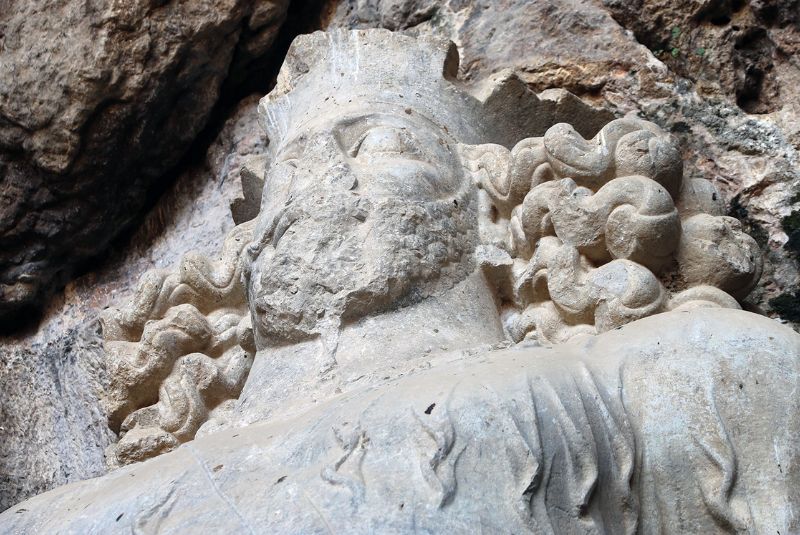
Amenities
While nearby Bishapur offers basic amenities like restrooms, parking, and dining options, the cave itself remains in its natural state without such facilities.
Best Time to Visit
For a peaceful visit with pleasant weather and fewer crowds, the period after the Iranian Nowruz holidays, particularly early in the week, is ideal. If you must travel during official holidays, spring is the best season to visit Shapur Statue Cave.
Shapoor Statue Cave Nearby Attractions
While visiting Shapoor Statue Cave, there are several nearby attractions that offer a mix of natural beauty and historical significance.
Parishan Lake
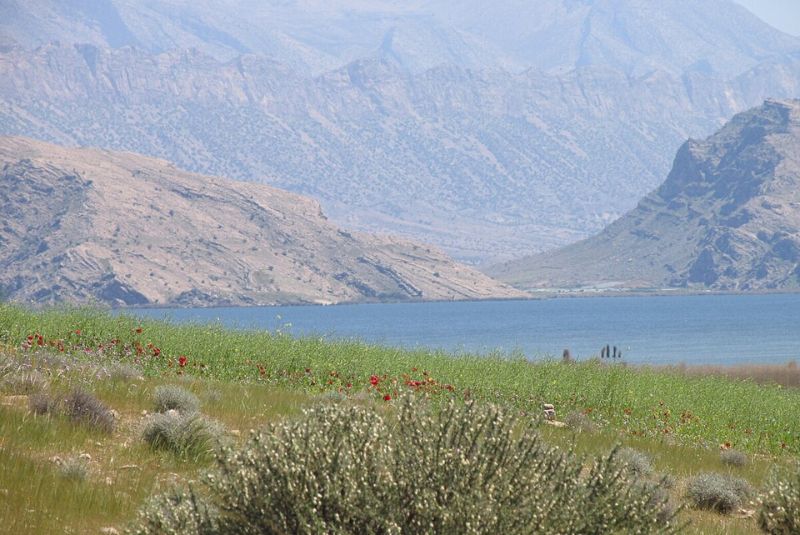
Located 15 kilometers southeast of Kazeroon, Parishan Lake is a natural wonder in western Fars Province. As one of the largest lakes in Iran and the Middle East, it is nestled in the highlands of Kazeroon. Due to its unique ecological value, Parishan Lake has been recognized as an international wetland. However, in recent years, the lake has faced challenges, with significant portions drying up and becoming marshy at certain times of the year.
Bishapur City
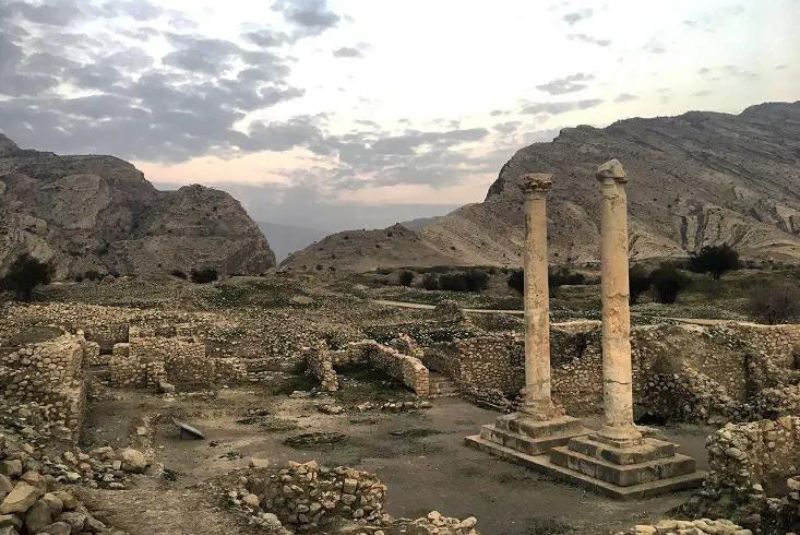
Following his victory over the Roman Empire, Shapur I commissioned the construction of Bishapur, a city designed to showcase his power. Positioned along the route from Persepolis to Ctesiphon, Bishapur was built in an area with a favorable climate. The city, a remarkable example of ancient engineering, is laid out in a rectangular pattern with four gates and two main streets, reflecting Ionian architectural influence.
Bishapur is divided into two main sections. The residential area includes homes, hot springs, and markets, while the Royal Citadel houses significant historical sites such as the Anahita Temple, Ceremonial Hall, Mosaic Porch, and the Valerian Palace. The Anahita Temple, constructed from carved stones in the Achaemenid architectural style, is a roofless square room designed to allow the water from the Shapur River to flow through and exit via the temple's aqueduct.
Imamzadeh Seyed Hossein Forest Park
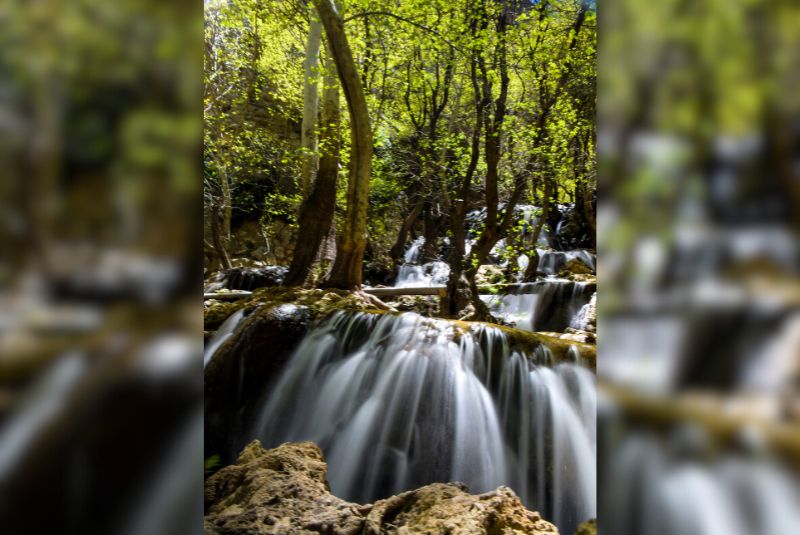
About 25 kilometers from Kazeroon, Imamzadeh Seyed Hossein Forest Park is a serene destination known for its lush trees and refreshing spring waters. It provides a peaceful environment for visitors, a dedicated area for travelers to rest and stay, enhancing the park's appeal as a relaxing getaway in nature.
Final Takeaway
Shapoor Statue Cave is a significant monument with immense historical value, making it a must-visit for anyone traveling to Iran and Kazerun. Though the cave's complex structure and slippery terrain make it challenging to explore fully, the accessible areas reveal the grandeur of this ancient site. Don't miss the opportunity to witness this remarkable piece of history on your visit.
Share your story!
Comment below and let us know about your Experience.
Your story inspires others!


Comment
Leave a Comment